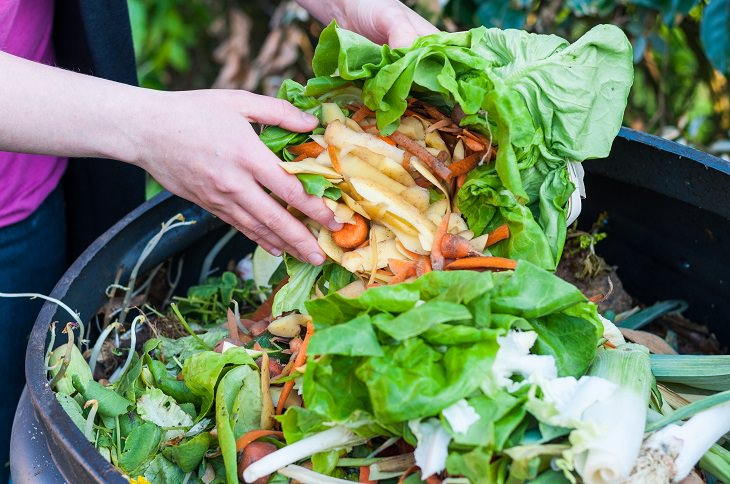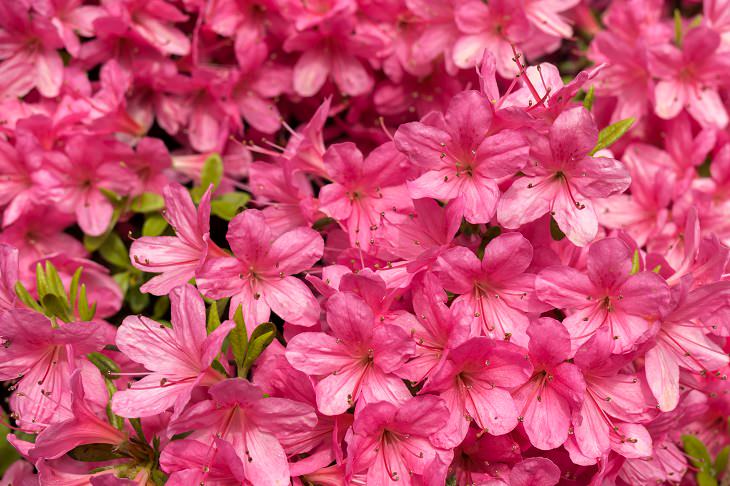
Before you dump your tea bags in the trash, consider this: they have a lot more than just one purpose. You may already know about using tea bags to treat eye afflictions, razor burn, or toothaches, but did you know that they are great for greenery too? Wet, dry, closed, or open, tea bags make a fantastic addition to all your plant-related endeavors. The reason for this is that tea leaves contain around 14.5 nitrogen and other nutrients that help to nourish the soil. Furthermore, tea leaves also improve soil structure and increase drainage. And, if this wasn't enough, the tannic acids that are found in tea leaves can mildly change and lower the pH of your soil, making them perfect for acid loving plants such as azaleas, hydrangeas, and ferns. Below are seven fantastic ways that you can use tea bags in your garden.

Tea bags are a great addition to a compost heap because they help to speed up the decomposition process of organic matter. Furthermore, they will attract acid-producing bacteria which will eventually help to create acid-rich compost. However, before you toss your tea bags onto the compost pile, make sure that they are not made up of plastic, as plastic does not decompose and will do more harm than good. You can tell if a tea bag is compostable or not by the way it feels - if it's slippery, do not use it. If you have any doubts, simply slit open the bags and pour the leaves onto your compost pile.

If you are after an organic way to repel pests, then your used tea bag is just what you're after. Aphids, caterpillars, snails, slugs, and other plant eating creatures can be kept at bay by simply sprinkling some tea leaves into the soil. It is believed that this works because these creatures do not like the smell of the caffeine present in tea.
4. Pain Relief for Bug Bites
Our gardens will always have bugs crawling and flying around in every direction. Unfortunately, some of these insects like to nibble on human flesh, so if you get bitten by a bug, you can relieve most of the pain by making a tea bag compress. simply place a cooled tea bag compress on the painful area and wait for it to work its magic. After just a couple of minutes, you should see a considerable reduction in inflammation, itchiness, and pain. This works as the tea bag draws the fluid (which causes the aforementioned symptoms) out of the bite.

6. Fix Your Lawn
The quality of your lawn is dependent upon multiple factors - the weather, where you live, watering, your garden's very own ecosystem, what kind of plants and trees you have, how you look after those, and which insects visit your garden. As a result, sometimes you will have to deal with bald spots on your lawn. Replanting these spots with grass seeds is not always simple, as you cannot just dig up the ground and scatter them around. Luckily, you can use teabags to correct these spots. Simply take a used teabag that is moist, place it on the bald spot and sow with some grass seeds. The teabag provides moisture and will decompose over time, leaving just the new grass behind.
Tea bags can also be used to germinate other types of seeds. To do this, dampen the tea bags just a little bit, slice them open, and place one seed inside each one. Place them in the sunlight and make sure to keep them moist until your seeds have started to sprout.
7. Water and Dirt Retainer
When placed in the bottom of plant pots or containers, tea bags will help keep the dirt in the pot while also maintaining water. When planted in soil holes, the bags also help to keep roots moist upon planting seeds or transplants.
Bonus Video: Patrick Dolan explains why he uses tea bags in the garden
Source: tiphero and plantcaretoday
Photos: depositphotos